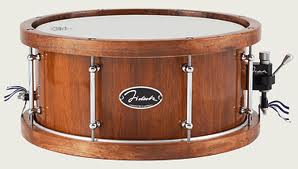Tasmanian Blackwood is an emergent rainforest species. It grows easily, into small 'sucker' sized shrubs in dense thickets, from whence "only the strong survive".
It is a beautiful cut timber, showing real character and warmth - with each piece having it's own distinct 'personality'.
So - without further ado -
Tasmanian Black Wood (Black Wattle, Hickory)
Acacia melanoxylon
Acacia melanoxylon
Hardwood
What does it look like?
Blackwood timber is sought after for its impressive appearance and finish qualities. The heartwood is a rich, golden brown, sometimes complimented by reddish streaks or a narrow band of darker colour, indicative of the growth rings.
The sapwood can be up to 50mm wide and is much paler in appearance. Even-textured, the Blackwood grain can either be straight or have a wavy, fiddleback pattern, which is great for furniture and veneers.
 |
| Tasmanian Blackwood |
This fiddleback is only present in select trees. It gives the wood a quilting effect reminiscent of gathered silk.
 |
| Tasmanian Blackwood "Fiddleback" |
What is it used for?
Blackwood is usually used for decorative pieces - veneers, paneling, furniture, cabinetry and flooring.
It is beautiful used indoors, but is not really suitable for structural or outdoor uses.
It has in the past been used for carving, turnery, flooring, boat building and gunstocks.
The most recently discovered use for Blackwood is musical instrument making (in particular guitars, drums, Hawaiian ukuleles, violin bows and organ pipes). In recent years has become known as a substitute for koa wood.
Where would I have seen it before?
In furniture, outdoor furniture, veneer, or musical instruments.
What is it like to work with?
Blackwood has a good overall workability. It is easy to nail and glues well. A smooth, polished finish can be achieved, making Blackwood ideal for furniture. It is also good for steam bending.
It makes beautiful bed headboards, and floor coverings (veneer) or as wood paneling in a ‘club style’ den or library.
If the grain is wavy then this may require the planer angle to be adjusted.
Where is it native to?
In Australia - NSW, VIC, SA, TAS, QLD,
New Zealand
Continental Africa
 |
| Hickory Suckers |




No comments:
Post a Comment
Got a question about what we do? Want to tell us how we can improve? Comments are always welcome